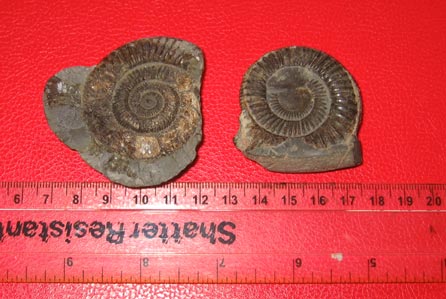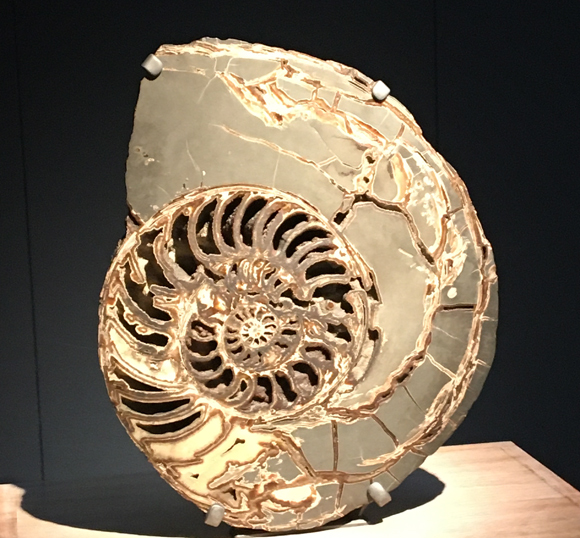Retrieving Ammonite Fossils
Lost but then they were found. We have been sent two ammonite fossils (Dactylioceras spp.) that were part of our extensive collection of fossils from Lower Jurassic strata of North Yorkshire. Although these Jurassic fossils of cephalopod molluscs are common and we do have lots of ammonite fossils in our collection it was great to see these two specimens again.
Ammonite Fossils
Ammonite Fossils Back in Everything Dinosaur’s Collection
Picture credit: Everything Dinosaur
Such fossils have become part of ancient folklore, they are referred to as “snakestones”. The snakestone term is believed to have come from the Whitby area (North Yorkshire), although there are references to such stones from Somerset as well. The Whitby connection is that the Saxon Abbess St Hilda, on finding an area of land infested with snakes, turned all the reptiles into stones so that an abbey could be built. As locals wondered why no heads of the snakes had been preserved, only the coiled bodies, heads were often carved onto specimens to make them look more authentic. Some holotype specimens making up important museum collections have a snake carving on them, we think the holotype for the ammonite species Dactylioceras commune could be such an example.
There were no snake heads preserved as these fossils are the chambered, coiled shells of cephalopods related to cuttlefish and squid.
To view replicas of ammonites and other important creatures represented by common fossils: Ammonite Replicas and Other Prehistoric Animal Themed Teaching Materials.





Leave A Comment